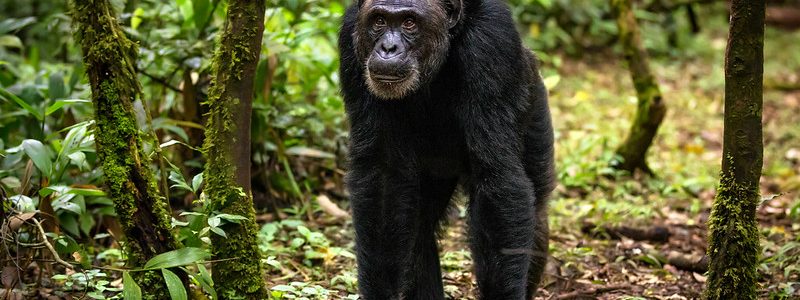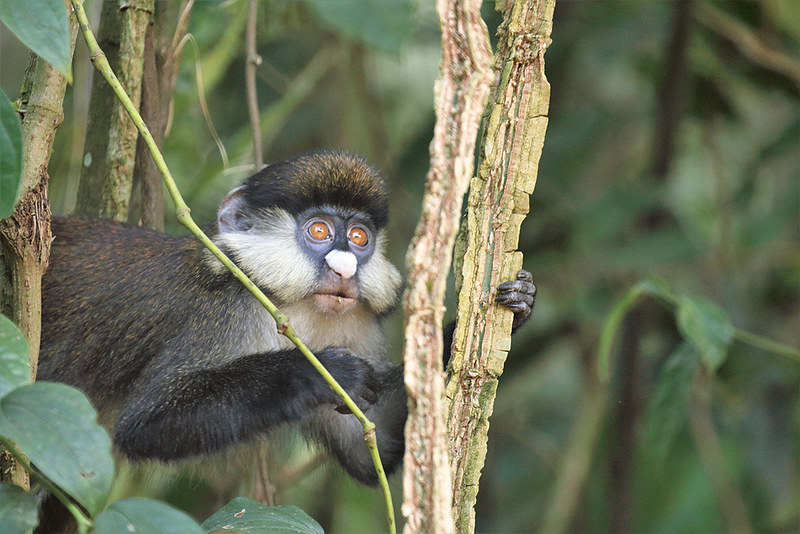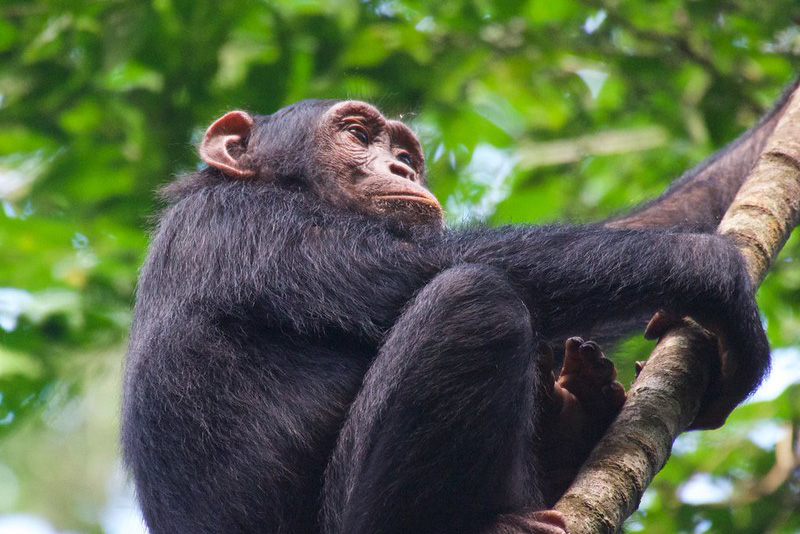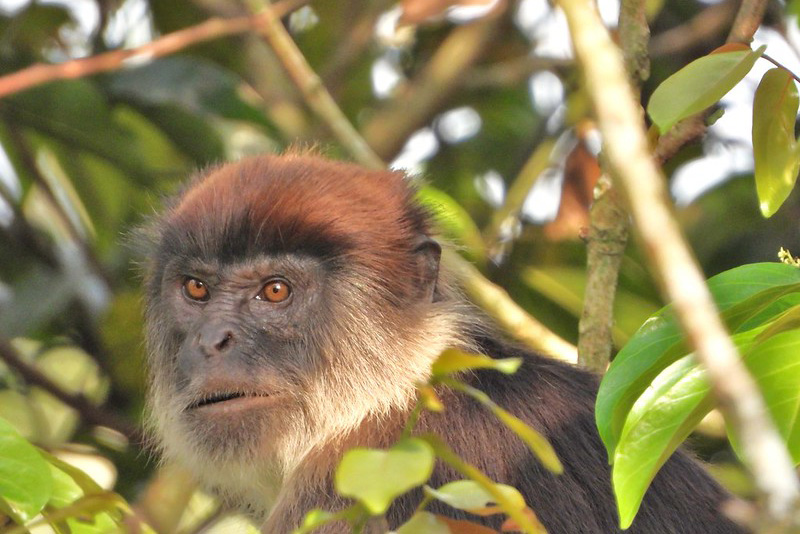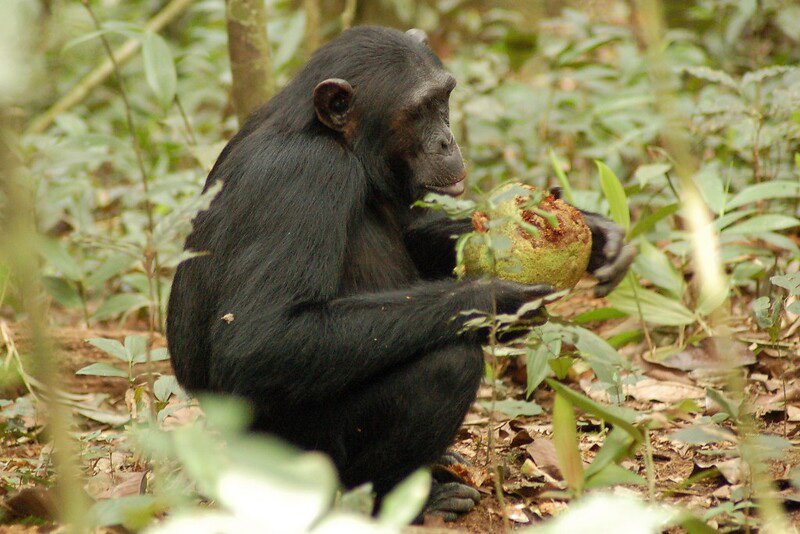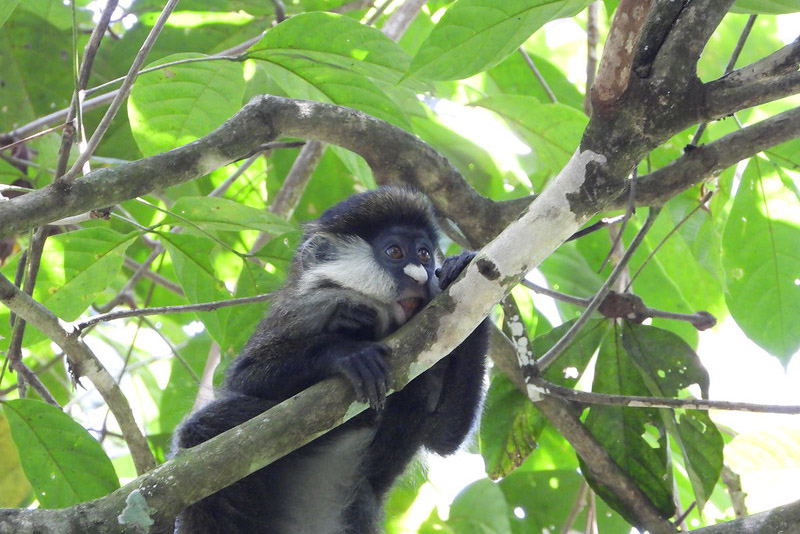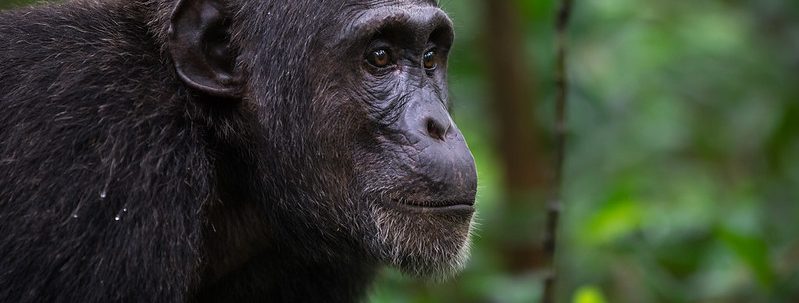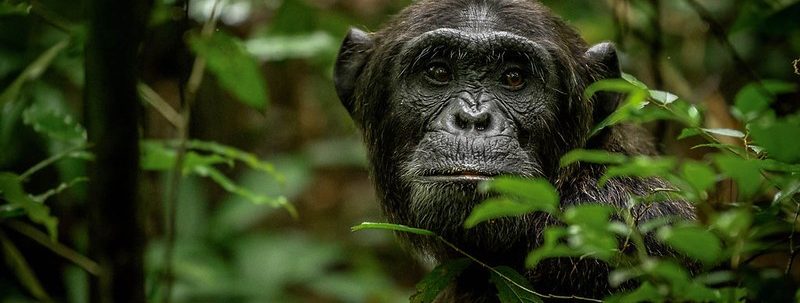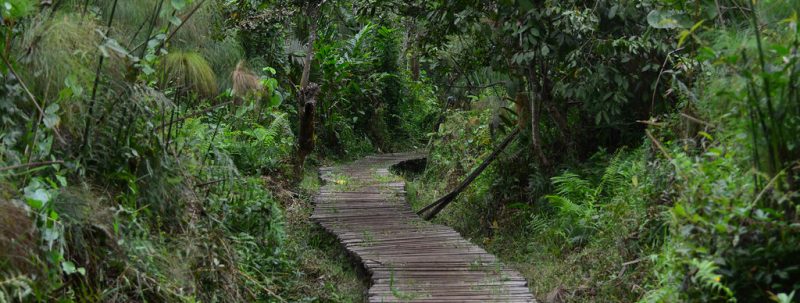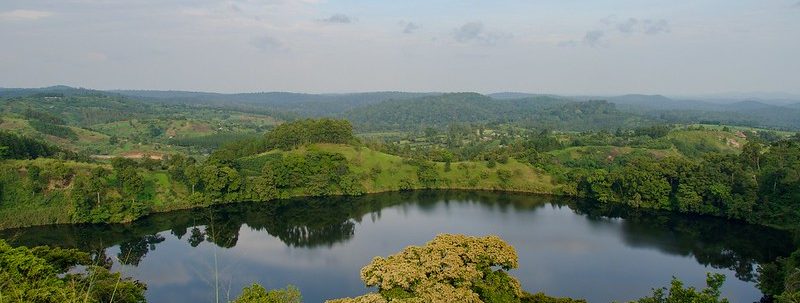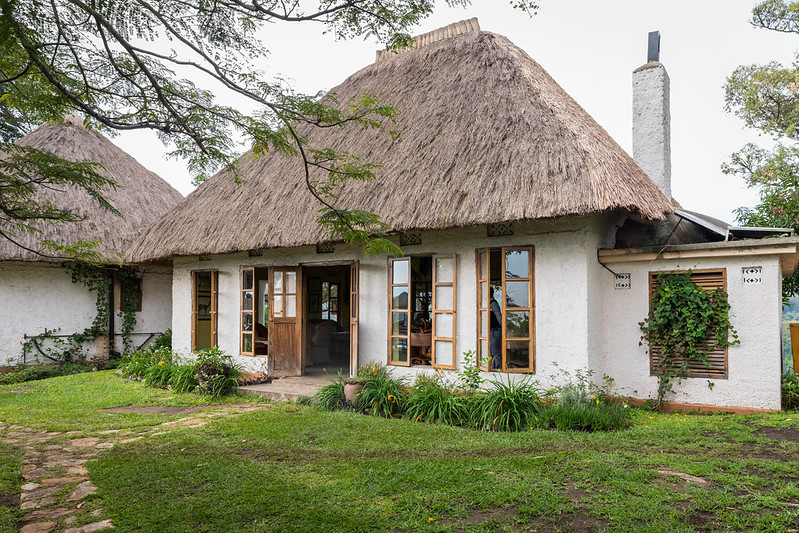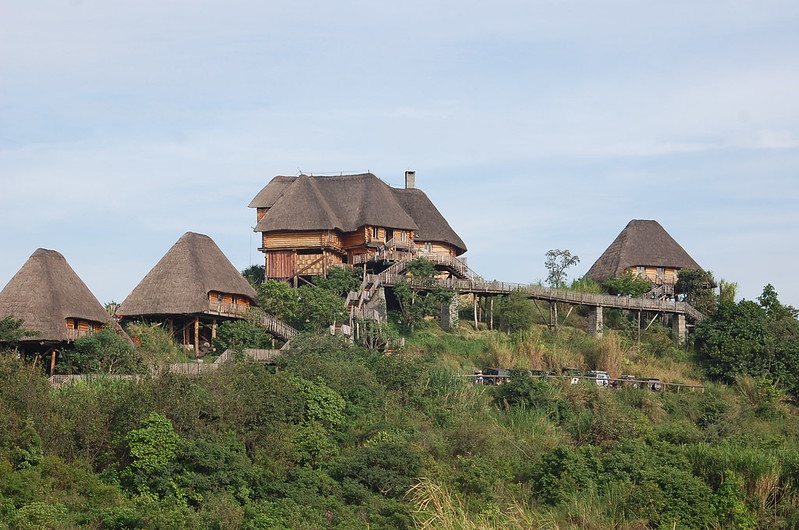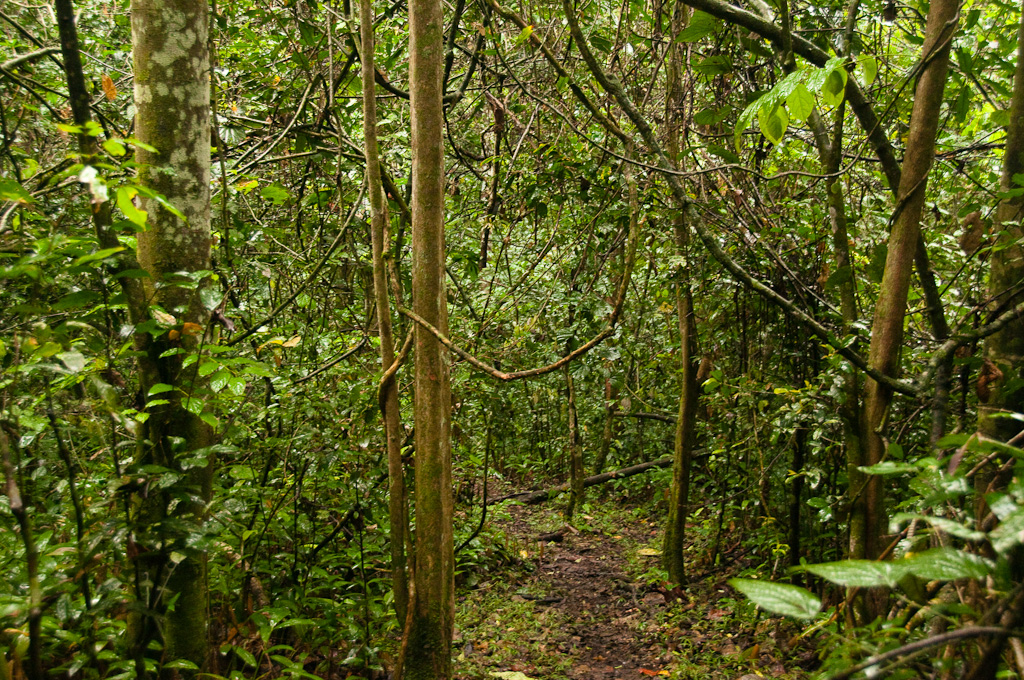Kibale Forest National Park
Kibale Forest National Park is 795km2 wide and one of the most beautiful equatorial tropical rain forests with small patches of grassland vegetation on the edges 320km out of Kampala in western Uganda near Fort Portal town. The forest harbours no less than 70 mammal species of these 13 species of primates most notable families of chimpanzees; humankind’s closest cousin in the wild with 98.7% genes similarity.
The forest is widely regarded as the capital city of primates on the African continent for nowhere else in the world do we find more than a dozen different primate species living harmoniously in an area the similar size. There are also Black and White Colobus monkeys, Red- tailed monkeys, Blue monkeys, Red- cheeked mangabeys, Vervet monkeys, Olive baboons amongst others and large mammals like forest elephants, forest buffalos, giant forest hogs, wild pig and others. Note that big mammals are always enclosed behind thick thickets, are shy and hard to see and very wild and aggressive once you bump into them because they are not used to aliens’ (human) presence.
The thick forests of Kibale boast of more than 200 plant and tree species harbouring no less than 375 bird species. There are also many species of reptiles, fish and insects notably beautiful butterflies. For these and other factors adventure safari into Uganda are more rewarding with forest walk under the shade of tree canopy and interact with nature and reality firsthand.
Recent Stories From Chimpanzee Trekking In April 2022
The best place in Uganda to trek chimpanzees is Kibale National Park. The chimpanzees in this area are habituated, which increases sightings significantly. The downside of this popularity is that it can get busy during the peak season. Six groups of six trekkers each are permitted to leave at once, so if everyone converges on a crucial group or individual, you could all end up in the same location (e.g. the alpha male).
The monkey expedition in April was incredible; we were given access to all the highlights imaginable. As the walk continued, the chimps’ energy levels increased. They were calling, screeching, grooming, fighting, swinging from trees, and sprinting down the pathways when they first started.
Adventure Suggest:
If you want a quieter chimp trek with fewer other trekkers around, opt to the afternoon session. The morning session is usually busier, as most people plan their trips with chimp trekking in the morning, and a trip to the Bigodi Wetlands in the afternoon. However, keep in mind that morning sessions are generally speaking slightly better for sightings.
Introduction To Kibale Forest National Park
Introduction to Kibale Forest.
Why visit Kibale Forest? Kibale is becoming one of Uganda’s most well-known wildlife sites because to the chimpanzees. Join a small group and venture into the bush on the chimpanzees’ track while being guided by a Uganda Wildlife Authority Ranger, learning more about their habitat as you go. When communication is achieved, you must remain motionless and slightly incredulous for up to an hour while watching our nearest relatives from a few meters away.
There is a tremendous want to put on your boots and walk when you are in Kibale. The forest is a suitable setting for an outdoor adventure because of its epiphyte-covered passes, thick undergrowth, and sun-dappled glades teaming with life. Even though it’s hot, the nettles are huge, and the ants are to be avoided, every step you take leads to a new discovery.
Chimpanzee Trekking In Kibale Forest National Park
Classic Chimpanzee Treks
The chimpanzees are Kibale’s primary attraction. Trekking with chimpanzees is much simpler than with gorillas, and you may spend hours with these incredible creatures by joining the habituation team.
Kibale is one of the most well-liked locations to track chimpanzees in Uganda due to the large density of chimpanzees, the accessibility of the forest, and the length of habituation. Although sightings are not guaranteed, in Kibale there is a greater than 90% possibility of doing so.
In contrast to gorilla trekking, chimpanzee tracking in Kibale does not require a high level of fitness or the ability to hike for extended periods of time. A typical tracking trip lasts three hours and includes a maximum of one hour with the chimpanzees, during which you may anticipate being within 8 to 10 meters.
Chimpanzee Habituation
Join the habituation team’s researchers to spend a half-day or a full day in the forest, away from the busier trails, if you are a photographer or have an interest that cannot be satiated in only one hour.
You will venture further into the forest as you walk with the habituation study team. Since these chimps are less accustomed to human presence, the experience might be surprising and difficult if the chimps opt to leave the area abruptly.
Both a half-day and a full-day tour are offered for this experience. For those signing up for the full day, you will begin spending time with the chimpanzees when they begin to leave their nests, around 6:30 am, and remain with them the entire day until they begin to leave their nighttime nests, around 7 pm.
When To Visit The Kibale Forest National Park
What Is The Best Time To Visit The Kibale Forest?
A tropical forest can create some of its own weather patterns. Because of this and Uganda’s equatorial location, you should always be ready for some rain while you’re there. However, it is still generally true that April, May, and November are the wettest months. The hottest months are December and January.
In Uganda, there isn’t really a “best time to visit” per such. Due to its equatorial location, the nation experiences consistent year-round temperatures and rains. Additionally, weather patterns are altering, making strict seasonality obsolete.
Other Things To Do After Chimp Trek In Kibale National Park
Bigodi Community Wetland Sanctuary
Bigodi is an excellent place to spot birds and monkeys, but a stroll here is also a good chance to support an excellent local tourism effort. The Kibale Association for Rural and Environmental Development manages the refuge, and all proceeds go toward funding educational and revenue-generating projects at the Bigodi Cultural Centre. Three-hour-long guided tours leave in the morning and the afternoon. For the finest experience of Bigodi, birders are encouraged to participate in the morning walks which are easy to do with a stay at Kibale Forest Camp. Even though you might not see many species, the ones you do will be highly unique since they are West African species that are at the eastern edge of their range, swamp dwellers, and forest-fringe and swamp dwellers. It is common to view the stunning great blue turaco.
The Exploration in Toro Crater Lakes
All properties have access to the crater lakes, which provide an exquisite visual contrast to Kibale’s woods and wetlands. Explore them with your guide during a day drive or from crater rim resorts.
In the Toro region, which is located on the park’s western edge and spans a distance of 10 kilometers, there are more than 30 permanent crater lakes. Although the climate is great, the land is largely farmed, but there are still lush patches of forest. The lakes are great places for natural swimming because they are a blend of freshwater and saltwater, and some are bilharzia-free. For a more active experience of a lovely setting, the hotels in this region, such Kyaninga and Ndali, provide canoeing, mountain biking, and walking trails.
Ndali Lodge
Ndali Lodge in the Rwaihamba Cluster is one of the most well-liked accommodations in the Toro Crater Lakes region. The lodge, which is family-owned and is situated on a tea estate started by the same family in the 1920s, has an unique English country house atmosphere and offers stunning views of the Rwenzori Mountains and the west.
These kinds of modest, locally owned lodges are very unique. The proprietor of Ndali goes above and beyond to make sure you have a great time, and the views are simply breathtaking. Simple, unpretentious, and always exceeds expectations
Kyaninga Lodge
If you want to visit Kibale Forest as well as the Semliki Valley and the foothills of the northern Rwenzori Mountains, Fort Portal, a small but thriving town, is an excellent spot to stay.
Both an excellent place to stay and a remarkable tale can be found at Kyaninga Lodge. The Kyaninga Crater’s rim is lined with opulent cabins fashioned from enormous eucalyptus logs by self-taught carpenters, which look down into the lake’s 220-meter depth. Kyaninga Lodge is what you get when you combine a jungle hotel with an alpine ski chalet.
Primate Lodge
Of course, a lot of tourists want to spend more time in the forest than just passing through; they want to stay there to experience the change from day to night, immerse themselves in the incessant chirping of birds, the buzzing of insects, the scurrying of animals through the underbrush, and the heaviness of the tropical rain.
Primate Lodge is the place to stay if this describes you. Primate is a very pleasant lodge in the middle of the jungle, just a 5-minute stroll from where the chimp treks start.
Getting To Kibale Forest National Park
Getting There
On typically good roads, it takes six hours to go from Entebbe to Kibale. It takes roughly seven hours to get from Murchison Falls National Park south along the Escarpment to Kibale. It takes roughly three hours to go continuously from Kibale to Queen Elizabeth National Park.
As an alternative, regular flights by light aircraft connect Entebbe with Kasese. It takes slightly under two hours to go from Kasese to Kigali. Flights connect Kasese with Murchison in the north, Kihihi and Kisori in the south, and Kihihi and Kisori in the north.
Flora & Fauna In Kibale Forest National Park
Fauna
Chimpanzees.
1,450. According to estimates, there are many chimpanzees living in Kibale Forest. They share a protected environment that is 795 square kilometers with 13 different primate species, including the rare and threatened L’Hoest’s monkey and red colobus monkey. Kibale is the best spot in Africa to watch primates because of its ecosystems.
Elephants, leopards, and more.
The park is home to 70 mammals. Along with buffalo, leopard, warthog, bush pigs, golden cats, and duikers, the greatest of these is the elephant, of whom 500 are said to live in the shadows. Compared to their savannah siblings, forest race elephants are smaller and have more hair.
Bird life.
By casting your gaze upward and beyond, you may see the birds. The Red-winged Francolin, Green-breasted Pitta, Joyful Greenbul, White-bellied Crested Flycatcher, Woodland Warbler, and Orange-tufted Sunbird are just a few of the 375 species that have been identified in Kibale. No other national park has records of the following four species: Nahan’s francolin, Cassin’s spinetail, blue-headed bee-eater, and masked apalis. The most fruitful birding locations are often Bigodi Wetland Sanctuary and the length of forest on both sides of the road to the Kanyanchu Tourist Center
Flora
However, the forest was later designated as a national park in 1993. Kibale National Forest Park was originally designated and protected as a water-logged reserve in the 1930s. The 351 trees in Kibale National Park represent 351 different tree species, the oldest of which are 55 meters and almost 200 years old.
Forest makes around 75% of Kibale’s vegetation, with grassland savannah only showing up on tops and ridges. The geography affects the forest’s characteristics, with swampy regions in valley bottoms and drier variations on slopes.
Kibale Forest National Park contains a big portion that is more than 75% covered with vegetation, grassland, and savannah.
When a chimpanzee whoops, you cant really hear its voice. But you can only feel its presence, somewhere deep inside you. Some old part of you. Suddenly, you are no longer a detached intruder; you are part of the forest world.
Geography & Geology Of Kibale Forest
For The Geology Buffs Among You.
50 kilometers (31mi) north of the equator, in the Kabarole district, on the eastern slopes of the Rwenzori mountains, is where the one kibale forest is located. Wildlife can freely move between the two parks thanks to the Kibale Forest Wildlife Corridor Game Reserve, a 180 km wildlife corridor that connects Ishasha in the southern Queen Elizabeth National Park to Sebitoli in the northern.
Kibale Forest Kibale Forest is 1,110 to 1,590 meters above sea level. The eastern limit of the rift volcanic belt, with its array of volcanic vents, lies close by. The fertile soils of the forest are a result of the ash released by explosions from these vents, which was first dispersed by the passage of the inter-tropical convergence zone and subsequently by gravity wind flow from the expanding ice-fields of the Rwenzori Massif during recent ice ages. The soils are perched over a Precambrian gneiss basement complex that extends southward across the northern edge of the Ndale volcanic field.

